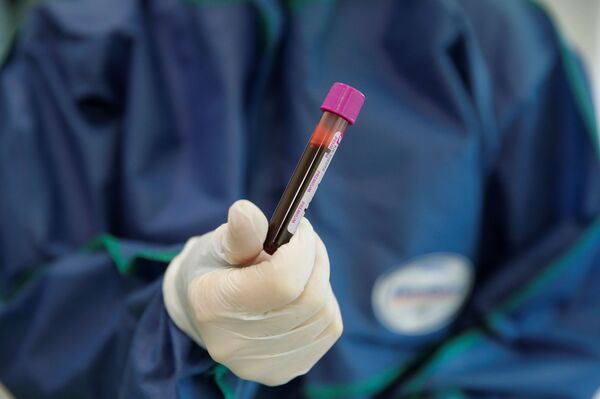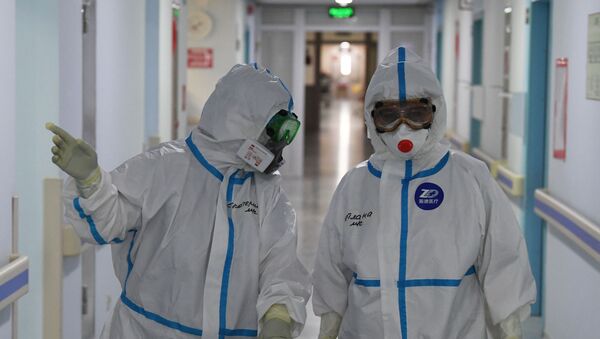The novel coronavirus SARS-CoV-2 poses substantial challenge to the world's health professionals given that a coronavirus-specific treatment and vaccines have yet to be developed. Russian researchers, infectious disease doctors and nurses are no exception.
Pitfalls of COVID
“Medical science has now more than ever been in demand; the hopes of all the world’s countries are linked to science. This concerns studying the pathophysiology of the virus, creating new drugs and vaccines, developing mathematical models of the pandemic… Will science be able to quickly respond to this situation?” this is how Alexander Sergeev, President of the Russian Academy of Sciences, started an online meeting, organised by Russia’s Ministry of Higher Education and Science, the Russian Academy of Sciences and the Scientific Russia portal.
The Virus is Mysterious and Secretive
Over two days, the COVID contagion produces three times more pathogenic particles in the human lungs than SARS, its predecessor, which caused an atypical pneumonia outbreak in 2002-2003. Moreover, the new virus acts extremely secretively; it produces almost no interferons, which serve as a signal to trigger the immune system. This was cited by Professor Nikolai Briko, chief epidemiologist of the Russian Ministry of Health, member of the Russian Academy of Sciences.
According to him, on average, one patient infects two to three people; the virus is more infectious than Ebola, but less infectious than atypical pneumonia. At the same time, the scientist is struck by the coronavirus’s gender characteristic: in all countries, men die from COVID more often than women. For example, in the United States, COVID kills twice as many men than women. In Western Europe, 69% of all coronavirus deaths are men.
Why is there such a difference? The reason is unclear. Some scientists explain this by the fact that women have two X chromosomes, while men have one: the protein that identifies coronaviruses is encoded on the X chromosome, as a result, there’s a double dose of this protein in women’s many immune cells, therefore the female body’s immune response is amplified. Science has yet to study it.

Doctors are “Out of the Game”
Russian scientists consider COVID-19 “a disease of organised groups.” Massive sites of infection are in monasteries, military collectives, nursing homes, institutions of the Federal Penitentiary Service and medical organizations. According to the WHO, doctors amount to about 20% of the coronavirus patients. In Wuhan, at least 40% were infected in medical facilities. China has registered more than 3.7 thousand infections of medical personnel.
“Unfortunately, doctors are also dying in Russia, where multiple hotbeds of the coronavirus have been recorded in medical organisations. Russian doctors have published a list of their colleagues who died during the coronavirus pandemic. There already are more than 70 names on the list,” the chief epidemiologist of the Ministry of Health said.
According to him, there are objective reasons for this: poor material-and-technical condition of some medical organisations, lack of wards to isolate infectious patients, problems with chamber disinfection, lack of hospital epidemiologists, lack of FFP2 (or FFP3) respirators etc. Among subjective reasons there are lack of skill in sorting patients and enormous loads on doctors.
In addition, according to experts, existing personal protective equipment (PPE) doesn’t provide 100% protection against the infection; therefore it is extremely important to develop a fundamentally new drug-based individual prevention.
“We should first of all protect medical workers. If we have 10-15% of doctors out of the game a week, there may not be enough medical staff at the final stage,” Vladimir Starodubov, member and secretary of the Department of Medical Sciences, said.
“Different” Resuscitation
As a result of the new coronavirus infection, a completely unique situation has developed in terms of anesthesiology-resuscitation. This was stated by Sergey Petrikov, head of Sklifosovsky Research Institute of Emergency Medicine and corresponding member of the Russian Academy of Sciences. “Anesthetists and resuscitators have always worked in collaboration with surgeons. But at the moment, anesthetists are at the forefront, being full-fledged doctors treating COVID patients. There has never happened before,” he said.
As Sklifosovsky Research Institute of Emergency Medicine’s experience shows, 30-50% of patients admitted to the hospital require intensive care observation. In this regard, according to the doctor, it’s necessary to revise the usual calculation of intensive care beds, from a point where a hospital should have 10% of resuscitation beds, up to a point where it needs as many as 30-50%. Moreover, each resuscitation department should be equipped with a ventilator, which can be used invasively or non-invasively, as well as oxygen supply systems.
According to the Research Institute head, in many Russian hospitals, about 20% of COVID patients who are at hospital departments are “on oxygen”. He believes that this is a very dangerous situation.
“This is the pool of patients whose condition may worsen very quickly; they may end up in intensive care with invasive ventilation. This will be a serious lung lesion. Such patients should be monitored. We try not to leave them in hospital wards, but immediately transfer them to intensive care,” the doctor said.
Moreover, according to him, with respiratory support, the medical choice should be shifted towards non-invasive methods: transferring the patient to the prone position (“this simple technique can increase oxygenation, but it’s important to bear in mind that this is a temporary phenomenon”), then oxygen insufflation (“high-flow nasal cannulas”) and non-invasive ventilation is necessary. That is, each patient with lung damage of moderate severity spends the whole day performing all these tasks: prone position, high-flow oxygen and non-invasive ventilation.
In addition, Sklifosovsky Research Institute of Emergency Medicine has started scientifically using experimental methods to treat COVID: ventilation with an oxygen-helium mixture (“helium is a driver for transporting oxygen closer to the affected parts of the lungs”) and hyperbaric oxygenation (HBO is performed in a resuscitation chamber). These techniques have been launched recently, and so far, doctors don’t have enough scientific comparative data.
Vaccine: “Salvation or Vain Hopes”
The whole world associates advancing in the fight against COVID with developing a vaccine. However, academician Vitaly Zverev from Mechnikov Scientific Research Institute of Vaccines and Serums RAMS warns the scientific community against vain hopes for the speedy creation of such a vaccine.
“I will be glad and proud if someone creates a vaccine that can really be used to vaccinate the population, but this is not easy: the virus is very complex, hence the complex approaches to creating a vaccine,” he said. At the same time, the academician recalled that despite the huge funds invested in creating the SARS vaccine, it hasn’t been created: “I talked to people who were involved in this developing that vaccine; they admitted that the results were such that they could not even be published.”
According to him, in this context, an urgent and promising direction is developing drugs for emergency prevention of the coronavirus infection based on immunological technologies. It is about activating the innate immunity mechanisms using a multicomponent bacterial vaccine consisting of antigenic complexes.





